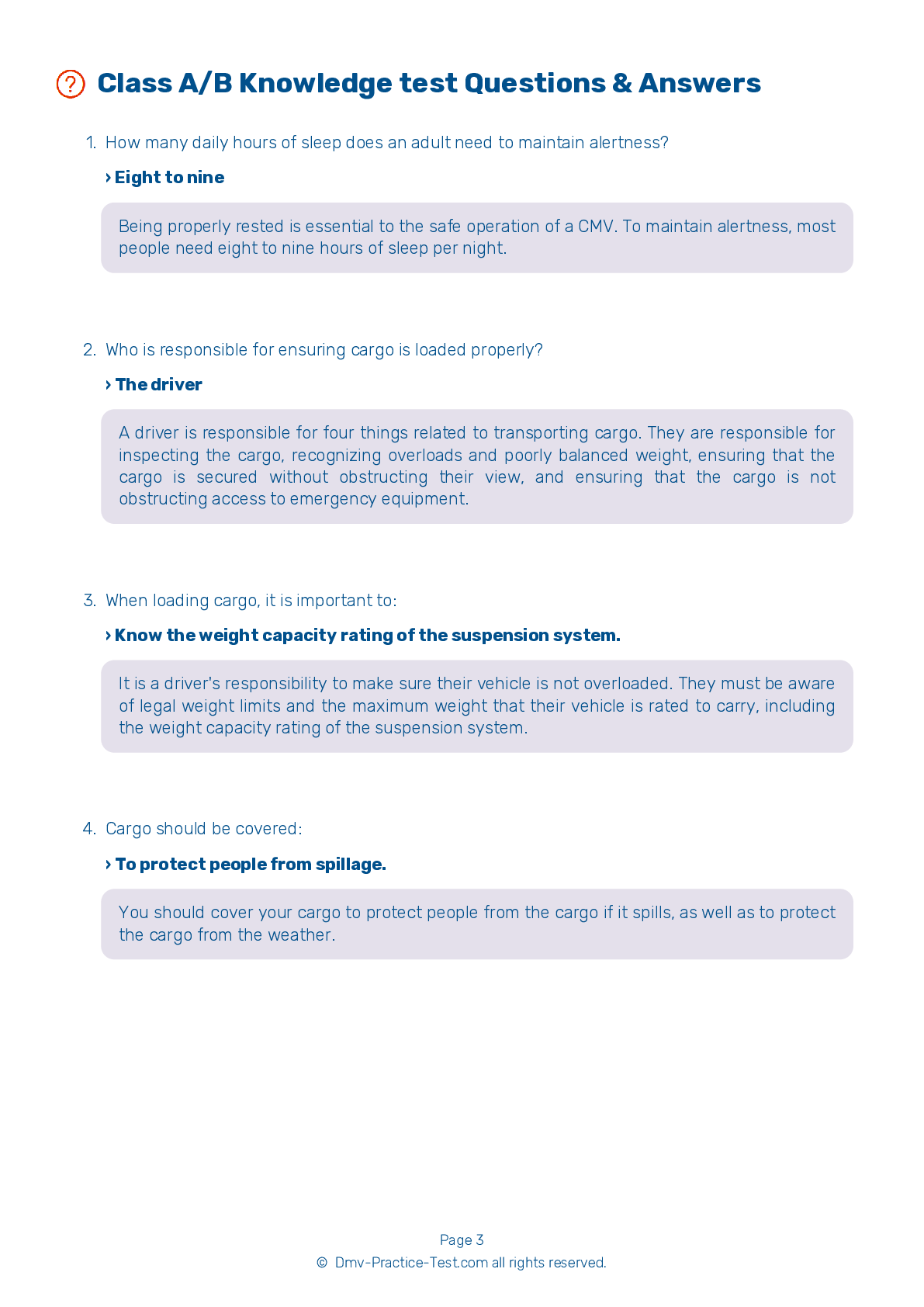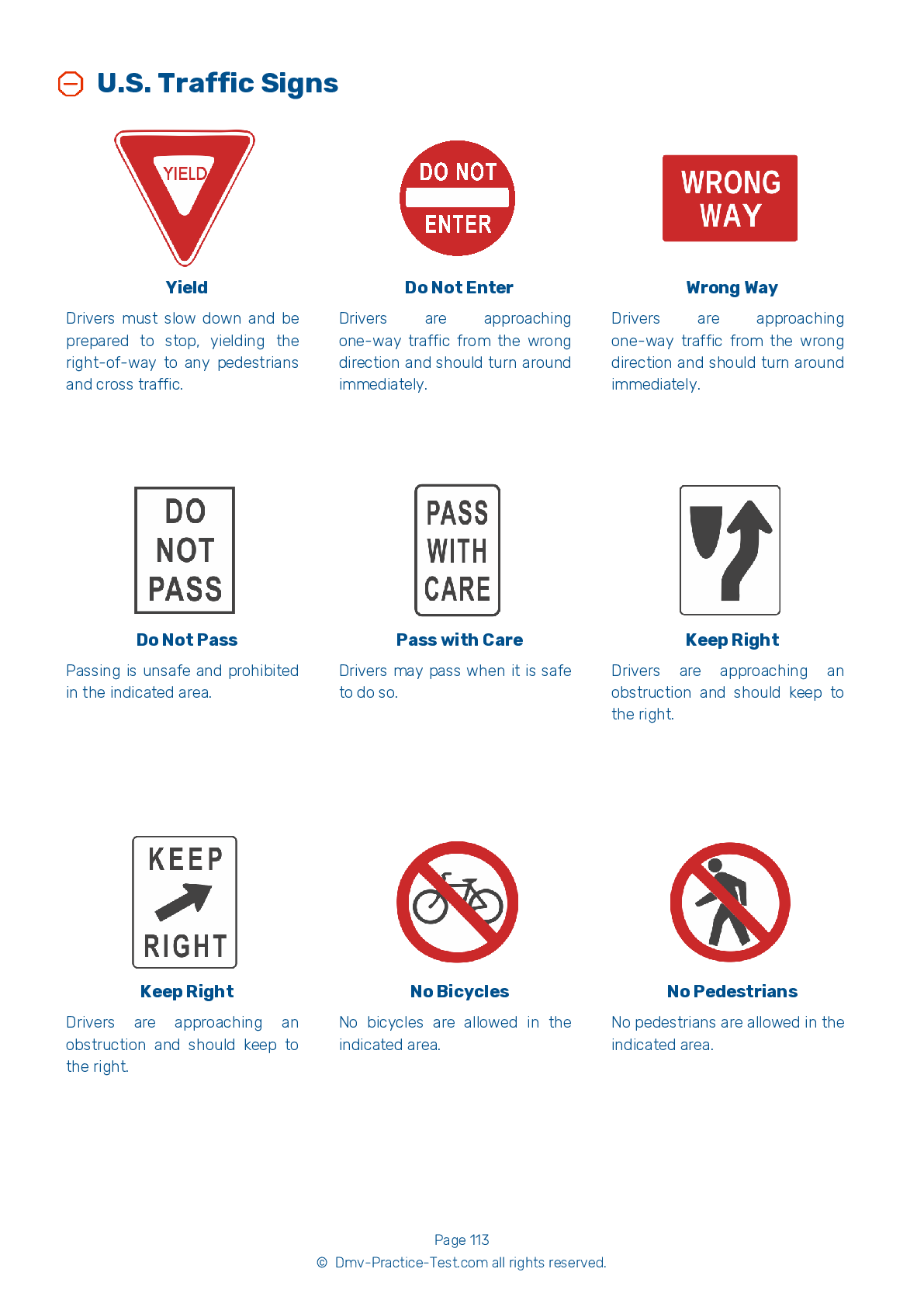Class A Driving Test | Vermont 2025 #1 Page 6 of 7
Train for FREE online with our Vermont class A license test. The official exam test consists of several obligatory parts, with all of them checking your knowledge of different blocks of road rules. If you need to obtain a VT CDL class A permit in 2025, practice as much as possible. Free sample tests published on our website will help you check and improve your knowledge and boost your grades. Please bear in mind that CDL class A requirements may vary from state to state.
36 . Pre-trip inspections should be done:
A pre-trip inspection should be completed in the same way before every drive. Consistency will help you learn all of the proper steps and decrease the likelihood that you will forget to check something.
37 . If feeling drowsy while driving, you should:
If you begin to feel drowsy while driving, the best thing to do is to stop and get some sleep. A driver trying to push on and finish a trip while fatigued is a major cause of fatal accidents.
38 . If there is a fire in your vehicle and you are not sure how to extinguish it, you should:
If you are not sure which method to use when putting out a fire, do not attempt to extinguish the fire on your own. Instead, wait for firefighters to arrive and let them handle it. This is especially true if you are experiencing a hazardous materials fire.
39 . While driving, you may:
While operating a CMV, holding a cell phone to make a voice call is prohibited. Drivers may not send or read text messages while operating a CMV.
40 . To warn drivers behind you that you will be slowing down, you should:
To let drivers behind you know that you plan to slow down, lightly tap your brake pedal a few times to flash your brake lights. It is important to communicate your intentions to other drivers.
41 . When leaving your vehicle:
Parking brakes should be used whenever you park. If necessary, chock your wheels.
42 . How long must an applicant hold a Commercial Learner’s Permit (CLP) before taking the road test?
You must have a Commercial Learner's Permit (CLP) for a minimum of 14 days before you can take the CDL skills test. A CLP will be valid for 180 days.
See the exact questions that will be on the 2025 Vermont DMV exam.
99.2% of people who use the cheat sheet pass the FIRST TIME
Lillian MCcranie explains how our CDL study guide was helpful in passing the exam and recommends it to everyone.
Cameron tells us how he purchased the CDL exam, and found it to be a useful tool which helped him pass the exam and find a job.



